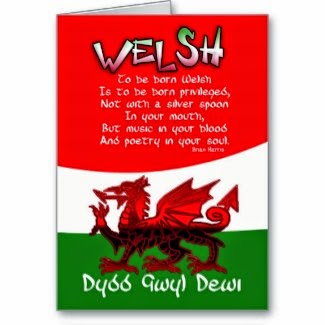Oak Apple Day was a formal public holiday celebrated in England on 29 May.
What is Oak Apple Day?
Oak Apple Day commemorates the restoration of the English monarchy in May 1660. In 1660 Parliament declared 29 May to be a public holiday: "to be for ever kept as a day of thanksgiving for our redemption from tyranny and the King's return to his Government, he entering London that day."
The public holiday - Oak Apple Day - was formally abolished in 1859 however in some parts of England the day is still celebrated with local customs and has also been known as Shick Shack Day / Oak and Nettle Day or Arbor Tree Day.
Interesting Information
Charles II was said to have hidden in an oak tree in 1651 after the Battle of Worcester. He escaped from the Roundhead Army by hiding in an oak tree in the grounds of Boscobel House. Oak leaves and oak apples became a symbol of his restoration to the monarchy and Parliament declared 29th May a public holiday.
Local Traditions
Aston on Clun - Shropshire (Sunday 29 May 2016)-
Each year at the famous black poplar Arbor Tree the village celebrates Arbor Day.
This year: Proceedings start at the tree at 1:15pm with dancing and music which includes John Kirkpatrick's Arbor Day song and is supported by morris dancing. This will be followed by a Children's Pageant that leaves the Village Hall at 1:30pm and arrives at the tree at 1:45pm. The procession will then return to the Village Hall and Green for refreshments, entertainments for the children, displays and activities which includes the history of the tree and local history.
St Neot - Cornwall (Sunday 29 May 2016)
Oak Apple Day is a traditional annual event in the village of St Neot and in the tradition of all great village feast days - it is an opportunity for villagers & visitors to continue a time-honoured tradition whilst having fun celebrating together as a community.
This year: Procession through the village followed by hauling the Oak up to the tower and listening to the bells ringing. This will be followed with BBQ and refreshments.
You can also visit the oak tree where Charles II hid at Boscobel in Staffordshire – it’s not the original tree but a direct descendant.
Great Wishford (Sunday 29 May 2016 & Monday 30 May 2016)
 Villagers claim their ancient right to collect
Villagers claim their ancient right to collect wood from Grovely Wood on Oak Apple Day.
This year: Oak Apple festival is over two days this year with "claiming of rights" at Salisbury Cathedral on Sunday 29th and dinner and fete on the Oak Apple Field on Monday 30th.
Fownhope - Hereford
This village has an on-going tradition in the celebration of Oak Apple Day. The Fownhope "Heart of Oak Society" organise an annual event where members of the society gather at the local pub and march through the village holding flower and oak leaf decorated sticks whilst following the society banner and a brass band. The march goes first to the church for a service and then to houses who host refreshments. The Heart of Oak Society was previously a friendly society but had to reform in 1989 to keep the tradition going. Although generally Oak Apple Day celebrations have decreased in popularity and knowledge over the years - Fownhope has managed to keep the event going. Their event has been increasing both in popularity and turn-out every year.
Northampton - Northamptonshire
Northampton still commemorates Charles II and his escape after the battle of Worcester. The town is grateful to Charles II for giving the citizens one thousand tons of timber from the Royal forests of Whittlewood after a great fire almost destroyed the town in 1675. A garland of oak-apples is laid at Charles II's statue at All Saint's Church each year on Oak Apple Day. This is followed by a celebration of the Holy Communion according to the Book of Common Prayer.
Castleton - Derbyshire (Saturday 28th May)
 Castleton Oak Apple & Garland Day is held on 29 May (unless that date falls on a Sunday when the custom is transferred to the Saturday). Oak Apple Day is Garland Day in Castleton.
Castleton Oak Apple & Garland Day is held on 29 May (unless that date falls on a Sunday when the custom is transferred to the Saturday). Oak Apple Day is Garland Day in Castleton. A ‘King’ and ‘Queen’ ride on horseback through the streets with the King’s head completely covered by a garland in the form of an inverted basket decorated with flowers. The procession is accompanied by music and dancing and usually starts from the Cheshire Cheese Inn.
Progress tends to be slow as all the pubs in the village are visited and there are pauses for dancing along the way before the garland is finally hoisted to the top of the church tower. The 'Queen' posy is then placed on the town war memorial.
Origins of the ceremony are uncertain although frequently linked to the restoration of King Charles II who escaped the Roundheads by hiding in an oak tree. The ceremony also celebrates the pagan rite for the symbolic ending of winter.






















